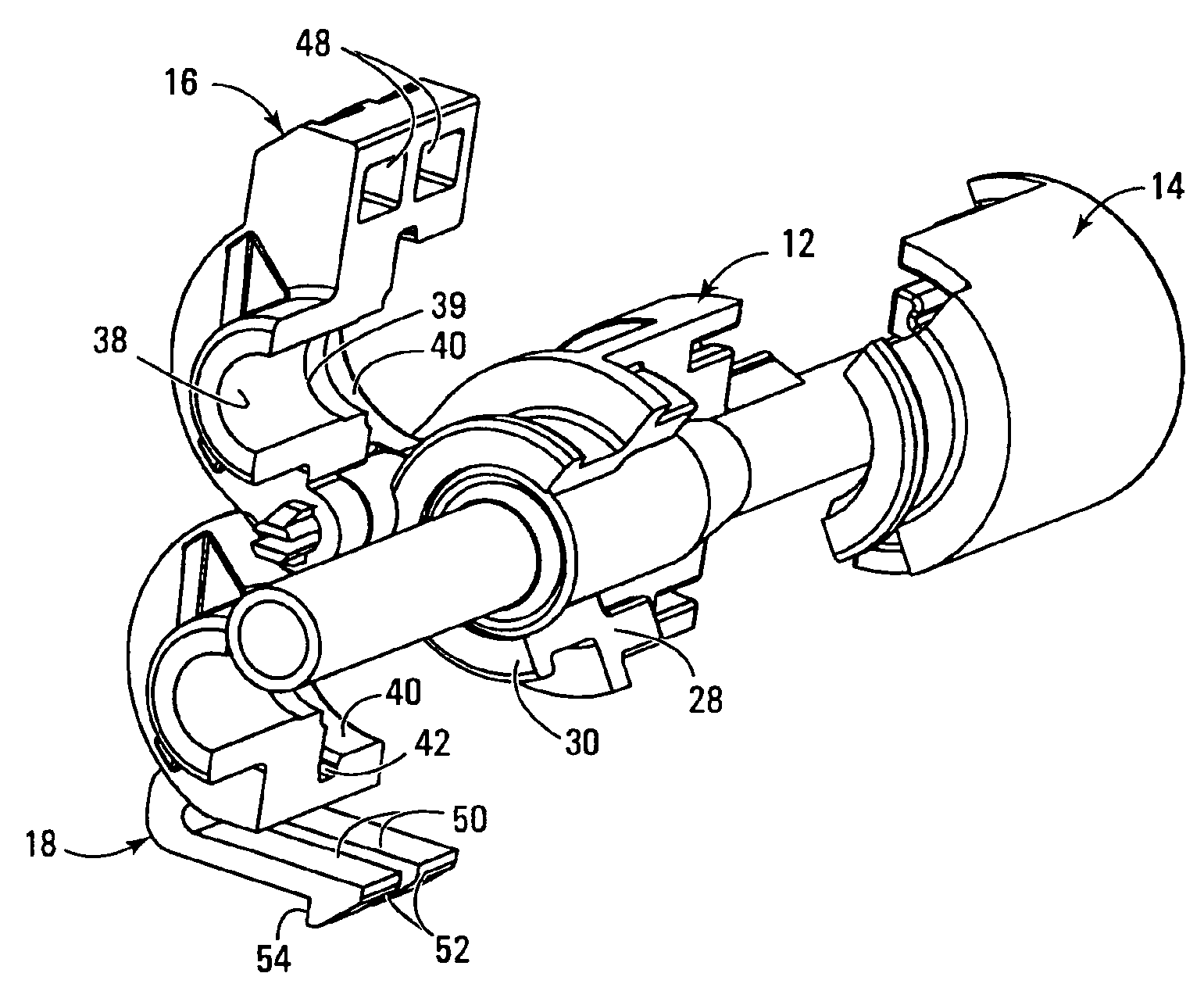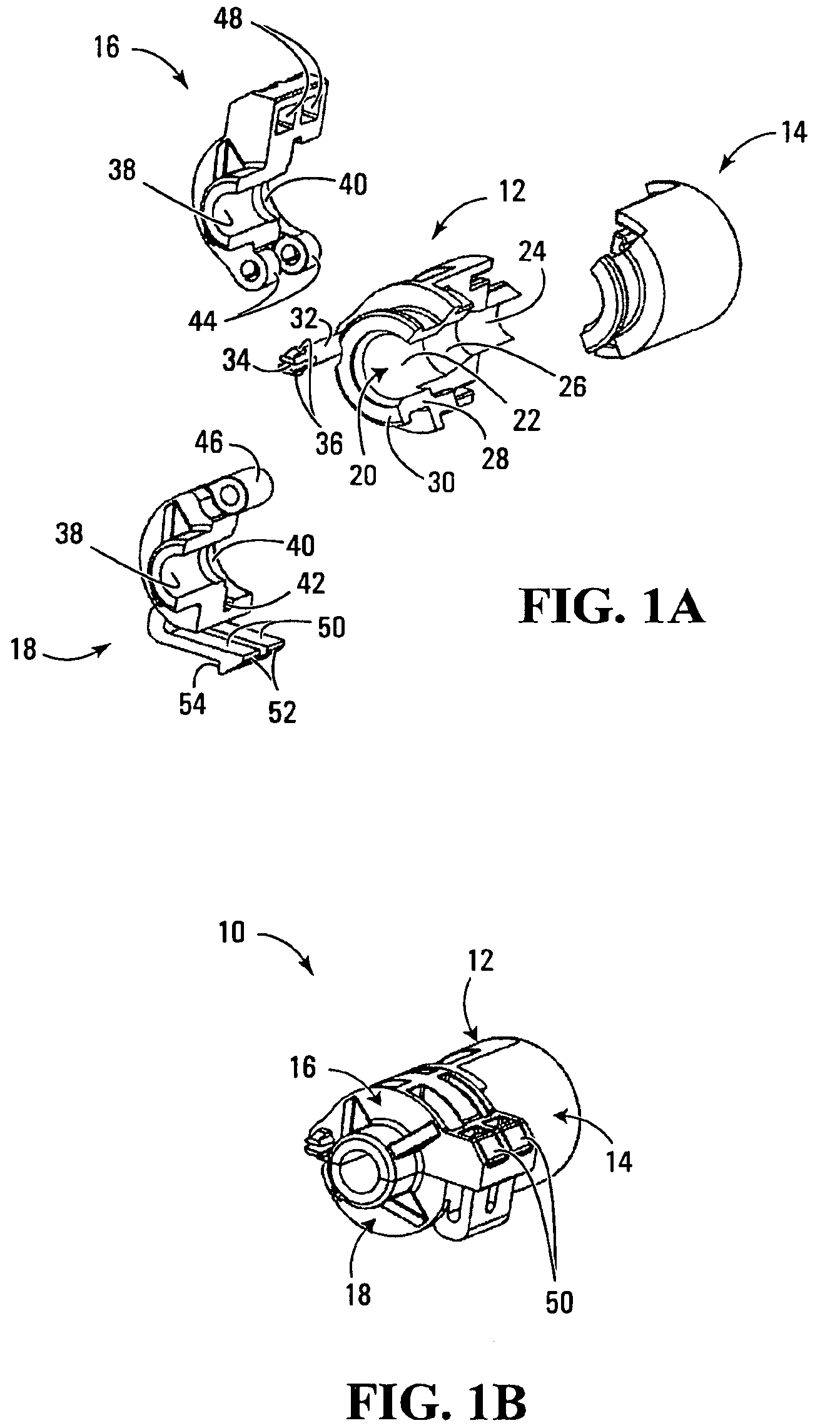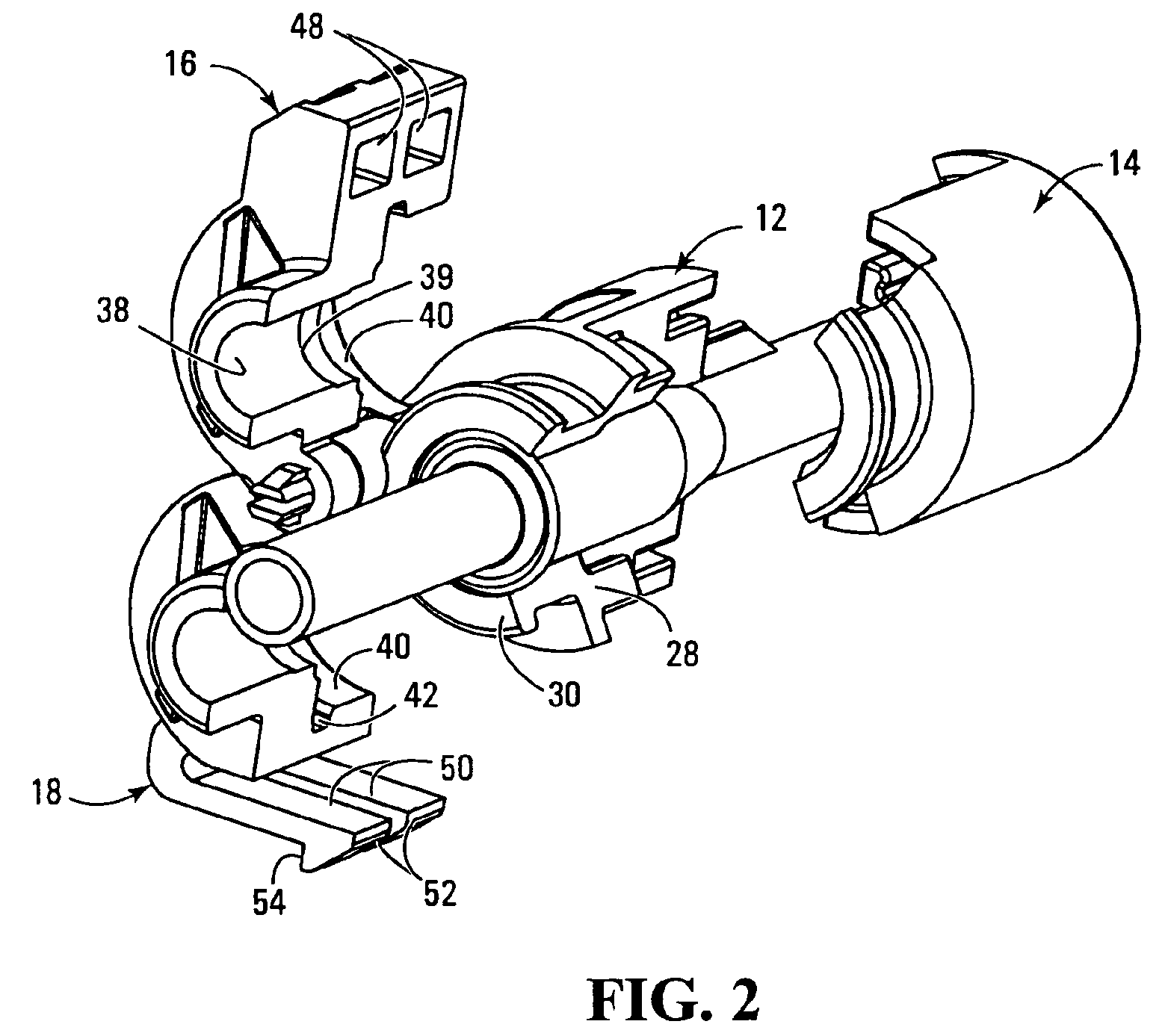Coupling for coaxial connection of fluid conduits
a fluid conduit and coaxial connection technology, applied in the direction of hose connection, coupling, transportation and packaging, etc., can solve the problems of end product being heavy and quite costly, joining forms eventually leaking, ultimate failure of the coupling, etc., to achieve strong resistance, not hindering the sealing of the joint or o-ring performance, and high operating pressure
- Summary
- Abstract
- Description
- Claims
- Application Information
AI Technical Summary
Benefits of technology
Problems solved by technology
Method used
Image
Examples
Embodiment Construction
[0031]The coupling indicated at 10 in FIG. 1B is shown in compact condition with the components interengaged as they would be when the coupling is in operation. The individual components however are shown more clearly in the exploded view of FIG. 1A and will be seen to comprise four principal elements namely a base 12, a base retainer 14, and first and second clamping arms 16, 18.
[0032]The base has a stepped cylindrical bore 20 having a larger diameter section 22 and a smaller diameter section 24 joined through a tapered frusto conical portion 26.
[0033]All four of the components 12, 14, 16 and 18 are fabricated as injection molded plastic parts, suitable materials being polyaramid (nylon) glass filled, polyurethane, styrene / acrylonitrile copolymer (crystalline or amorphous resins).
[0034]As is seen in FIG. 1A the base has a thick peripheral wall that surrounds the stepped cylindrical bore over most of the length of the latter. However at one end the base has a cylindrically curved tu...
PUM
 Login to View More
Login to View More Abstract
Description
Claims
Application Information
 Login to View More
Login to View More - R&D
- Intellectual Property
- Life Sciences
- Materials
- Tech Scout
- Unparalleled Data Quality
- Higher Quality Content
- 60% Fewer Hallucinations
Browse by: Latest US Patents, China's latest patents, Technical Efficacy Thesaurus, Application Domain, Technology Topic, Popular Technical Reports.
© 2025 PatSnap. All rights reserved.Legal|Privacy policy|Modern Slavery Act Transparency Statement|Sitemap|About US| Contact US: help@patsnap.com



